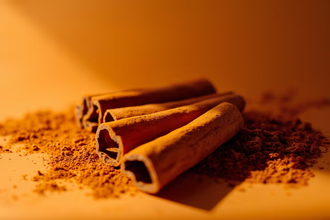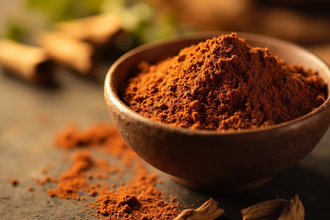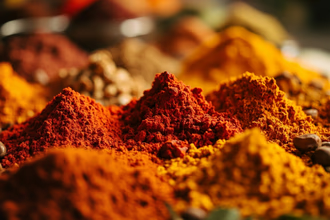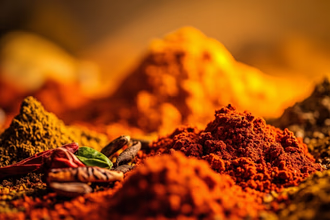Cinnamon, sourced by VH Global Export, is more than just a spice; it's a trip through history and flavor. From ancient Egypt, where it was used in embalming rituals, to modern kitchens worldwide, cinnamon has been a prized commodity. This aromatic bark, derived from trees, holds a special place in both culinary and medicinal traditions.
The spice boasts a rich history and a range of uses. Whether you're drawn to its warm, sweet taste or its potential health benefits, learning about the different types and applications of cinnamon can improve your appreciation for this versatile spice. VH Global Export specializes in sourcing premium-quality spices, bringing the best of India’s agricultural products to the global market.
Cinnamon: Uses, Types, and Health Benefits
Key Takeaways
- Cinnamon is a versatile spice with two main types: Ceylon and Cassia, each with distinct flavor profiles and uses.
- Ceylon cinnamon, or "true cinnamon," has a delicate, sweet flavor and lower coumarin content, making it ideal for desserts and safer for regular consumption.
- Cassia cinnamon has a stronger, more pungent flavor and is more commonly used in baking and savory dishes, but contains higher levels of coumarin.
- Cinnamon is used in both sweet and savory dishes, adding warmth and depth to pastries, beverages, stews, and curries.
- Proper storage in an airtight container in a cool, dark place is essential to maintain cinnamon's freshness and potency.
- Cinnamon possesses antioxidant and anti-inflammatory properties and may help regulate blood sugar and improve heart health.
- VH Global Export prioritizes quality and sustainability in sourcing cinnamon, often favoring Ceylon cinnamon for its lower coumarin content and delicate flavor.
Table of Contents
Introduction to Cinnamon

Cinnamon is a spice recognized and enjoyed around the world. It has a rich history, having been traded for centuries [1]. VH Global Export supplies premium spices, including cinnamon, to meet global demands.
Cinnamon comes from the inner bark of trees from the genus Cinnamomum [1]. This article will explore cinnamon's uses, types, and health benefits.
Cinnamon is versatile, adding warmth and depth to both sweet and savory dishes. Its distinct aroma makes it a favorite in perfumes and aromatherapy [1]. Cinnamon is available in various forms, such as sticks, powder, and oil, each offering unique applications [1].
Types of Cinnamon: Ceylon vs. Cassia
There are two main types of cinnamon: Ceylon and Cassia [1]. Knowing the differences will help consumers choose the right type for their needs [2].
Ceylon Cinnamon
Ceylon cinnamon, also known as 'true cinnamon', originates from Sri Lanka [5, 6]. It has a sweet and delicate flavor, making it suitable for desserts and other dishes where a mild cinnamon flavor is desired [2]. Ceylon cinnamon has a tan-brown color and consists of many thin layers [1]. The bark is thin and easy to grind [1, 3]. Due to its quality and delicate flavor, Ceylon cinnamon is often more expensive [1, 7].
Cassia Cinnamon
Cassia cinnamon comes from the Cinnamomum cassia tree, which is native to China and other parts of Southeast Asia [10]. It has a stronger, more pungent flavor compared to Ceylon cinnamon [1]. The bark is thicker and rougher in texture [1]. Cassia cinnamon is typically cheaper and more readily available than Ceylon cinnamon [1]. It is commonly used in baking and savory dishes [2, 3].
Comparison Table
Here is a comparison of the key differences between Ceylon and Cassia cinnamon:
| Feature | Ceylon Cinnamon | Cassia Cinnamon |
|---|---|---|
| Taste | Sweet and delicate [2, 4] | Strong and pungent [4] |
| Texture | Thin bark with many layers [1, 12] | Thick, rough bark [1] |
| Color | Tan-brown [1] | Dark brown-red [1] |
| Coumarin Content | Very low (0.004%) [1, 4] | High (1%) [1] |
| Price | More expensive [1] | Less expensive [1] |
VH Global Export's Choice
VH Global Export prioritizes quality and sustainability. While the source type is not specified in the provided context, Ceylon cinnamon is often favored due to its lower coumarin content and more delicate flavor [1, 7]. Coumarin is a natural compound that can be harmful in large doses, making Ceylon cinnamon a safer option for regular consumption [1, 8]. VH Global Export is committed to providing customers with the best spices while adhering to high safety and environmental standards [17].
Ceylon Cinnamon: The 'True Cinnamon'
Ceylon cinnamon, known as 'true cinnamon', originates from Sri Lanka [5, 6]. Its unique characteristics set it apart from other cinnamon varieties [1].
Ceylon cinnamon has a flavor profile characterized by sweet and delicate notes [2]. This makes it ideal for desserts, beverages, and dishes where a subtle cinnamon flavor is desired [2].
The bark of Ceylon cinnamon is thin and brittle, consisting of multiple layers [1, 12]. This delicate texture makes it easier to grind and use in various culinary applications [1].
Ceylon cinnamon is considered a higher quality and more expensive variety due to its distinct flavor and lower coumarin content [1, 7]. Coumarin is a natural compound found in cinnamon that can be harmful in high doses [1, 8]. Ceylon cinnamon contains significantly less coumarin than Cassia cinnamon, making it a safer option for regular consumption [1, 4].
The harvesting and processing of Ceylon cinnamon involve careful techniques to preserve its quality. The inner bark is harvested, and the outer bark is removed. The thin inner bark is then dried and rolled into quills [12].
Ceylon cinnamon often adheres to specific certifications and quality standards to ensure its authenticity and purity [17]. These certifications may include organic certifications or geographical indications that protect the origin of the product [17].
Cassia Cinnamon: The Common Variety
Cassia cinnamon is a more common and readily available type of cinnamon [1]. It originates from various regions, including China, Indonesia, and Vietnam [10].
Cassia cinnamon has a stronger, more pungent, and slightly bitter taste compared to Ceylon cinnamon [4]. This strong flavor makes it suitable for baked goods, savory dishes, and spice blends [2, 3].
The bark of Cassia cinnamon is thicker and harder than that of Ceylon cinnamon [1]. This makes it more durable but also more difficult to grind [1].
Cassia cinnamon has a higher coumarin content compared to Ceylon cinnamon [1]. High intake of coumarin may have potential health implications [1, 8]. It's important to consume Cassia cinnamon in moderation [8].
Cassia cinnamon is more affordable and widely used in commercial products, such as cereals, baked goods, and processed foods [1]. Its lower cost makes it an attractive option for manufacturers [1].
The cultivation and processing of Cassia cinnamon involve harvesting the bark from mature trees [10]. The bark is then dried and processed into various forms, such as quills or ground powder [12].
Ceylon vs. Cassia: A Detailed Comparison
Here is a detailed comparison between Ceylon and Cassia cinnamon, highlighting the key differences:
| Feature | Ceylon Cinnamon | Cassia Cinnamon |
|---|---|---|
| Taste | Sweet and delicate [2, 4] | Strong and pungent [4] |
| Texture | Thin bark with many layers [1, 12] | Thick, rough bark [1] |
| Color | Tan-brown [1] | Dark brown-red [1] |
| Origin | Sri Lanka [5, 6] | China, Indonesia, Vietnam [10] |
| Coumarin Content | Very low (0.004%) [1, 4] | High (1%) [1] |
| Price | More expensive [1] | Less expensive [1] |
| Common Uses | Desserts, beverages [2] | Baking, savory dishes [3] |
Consumers can differentiate between Ceylon and Cassia cinnamon by examining the bark's thickness and color [1]. Ceylon cinnamon has a tan-brown color and consists of many thin layers, while Cassia cinnamon has a dark brown-red color and a thicker, rougher texture [1].
VH Global Export's sourcing decisions are influenced by quality and sustainability factors. While the specific type sourced is not mentioned, Ceylon cinnamon is often preferred due to its lower coumarin content and delicate flavor [1, 7]. VH Global Export is dedicated to providing customers with the best spices while maintaining high safety and environmental standards [17].
Culinary Uses of Cinnamon

Cinnamon is a versatile spice used in a variety of culinary applications [1]. Its warm and aromatic flavor improves both sweet and savory dishes [2].
Sweet Dishes
Cinnamon is a staple in many sweet dishes [2]. It is commonly used in pastries like cinnamon rolls, apple pie, and other baked goods [3]. Cinnamon also adds a comforting touch to beverages, such as spiced lattes and hot chocolate [2].
Savory Dishes
Cinnamon is also used in savory dishes, particularly in Indian and Middle Eastern cuisines [3]. It adds depth and complexity to stews, curries, and meat rubs [2]. For example, cinnamon is a key ingredient in many Indian curries and Moroccan tagines [3].
Specific Examples and Recipes
Cinnamon can improve the flavor of various dishes. A pinch of cinnamon can lift the taste of oatmeal or yogurt. In baked goods, cinnamon complements fruits like apples and pears. For savory dishes, cinnamon pairs well with meats like lamb and chicken [2, 3].
Forms of Cinnamon
Different forms of cinnamon are used in cooking. Cinnamon sticks are often used to infuse flavor into liquids, such as stews and beverages. Ground cinnamon is commonly used in baking and as a seasoning for various dishes [1].
Storing Cinnamon
To maintain its freshness and potency, cinnamon should be stored in an airtight container in a cool, dark place [12]. Properly stored cinnamon can last for several years [12].
Flavoring Extracts and Oils
Cinnamon is also used in flavoring extracts and oils, which are used to add cinnamon flavor to a variety of products [1]. These extracts and oils capture the essence of cinnamon and provide a convenient way to incorporate its flavor [1].
Cinnamon in Sweet Dishes and Desserts
Cinnamon is a key ingredient in many sweet dishes and desserts [2]. Its warm and aromatic flavor adds a unique touch to a variety of treats [1].
Specific examples include cinnamon rolls, apple pie, crisps, and other baked goods [3]. Cinnamon complements the sweetness of these desserts, adding depth and complexity to their flavor profiles [2].
Cinnamon is also used in beverages like spiced lattes, hot chocolate, and teas [2]. It provides a comforting and warming element to these drinks [3].
Different forms of cinnamon are best used in specific recipes. Ground cinnamon is ideal for incorporating into batters and doughs, while cinnamon sticks are better suited for infusing flavor into liquids [1]. For example, cinnamon sticks can be steeped in milk or cream to create a cinnamon-infused base for lattes or hot chocolate [12].
Cinnamon in Savory Dishes and Spices
Cinnamon is a versatile spice that adds depth and warmth to savory dishes, especially in cuisines like Indian, Middle Eastern, and Moroccan [3]. It complements other spices, creating complex and flavorful profiles [2].
Examples of savory dishes that use cinnamon include stews, curries, tagines, and meat rubs [2]. In Indian cuisine, cinnamon is a key ingredient in many curries, such as Rogan Josh and Biryani [3]. In Moroccan cuisine, cinnamon is used in tagines, adding a sweet and savory element to the dish [3].
Cinnamon sticks are often used in braising liquids to infuse flavor into meats and vegetables [1]. Ground cinnamon is commonly used in spice blends, such as garam masala and ras el hanout [1].
There are regional variations in the use of cinnamon in savory dishes. In some regions, cinnamon is used sparingly, while in others, it is a more prominent ingredient [3]. The specific type of cinnamon used may also vary depending on the region and the dish [1].
Tips for Storing and Using Cinnamon
To maintain the freshness and potency of cinnamon, proper storage is important [12]. Cinnamon should be stored in a cool, dark, and dry place [12]. Airtight containers are key to prevent moisture and air from degrading the spice [12].
Cinnamon sticks generally have a longer shelf life than ground cinnamon [12]. Cinnamon sticks can last for several years if stored properly, while ground cinnamon may lose its flavor after about six months [12].
To test cinnamon for freshness, smell it. Fresh cinnamon should have a strong, sweet aroma [1]. If the aroma is weak or nonexistent, the cinnamon is likely stale and should be replaced [1].
Cinnamon can be used in different forms, each with its own applications [1]. Cinnamon sticks are ideal for infusing flavor into liquids, such as teas, stews, and braising liquids [12]. Ground cinnamon is best used in baking and as a seasoning for various dishes [1]. Cinnamon oil and extract can be added to recipes for an extra boost of cinnamon flavor [1].
For optimal flavor, cinnamon sticks can be ground at home using a spice grinder or a mortar and pestle [1]. Grinding cinnamon sticks fresh releases their aromatic oils, resulting in a more intense flavor [1].
Cinnamon flavoring extracts and oils are concentrated forms of cinnamon flavor [1]. They can be incorporated into recipes to add a strong cinnamon taste [1]. When using extracts and oils, it's important to use them sparingly, as they can be quite potent [1].
Health Benefits of Cinnamon
Cinnamon has several health benefits due to its antioxidant and anti-inflammatory properties [13]. It has been studied for its potential role in managing blood sugar, improving heart health, and more [13, 14].
Antioxidant and Anti-Inflammatory Properties
Cinnamon is rich in antioxidants, which help protect the body against damage from free radicals [13]. It also has anti-inflammatory properties, which may help reduce inflammation in the body [13].
Blood Sugar Regulation
Some studies suggest that cinnamon may help regulate blood sugar levels, which could benefit individuals with diabetes [14]. Cinnamon may improve insulin sensitivity and lower blood sugar levels after meals [14].
Heart Health
Cinnamon may play a role in improving heart health by lowering cholesterol and blood pressure [15]. Some research suggests that cinnamon can reduce total cholesterol, LDL cholesterol, and triglycerides, while increasing HDL cholesterol [15].
Other Potential Benefits
Cinnamon has been studied for other potential benefits, such as improved brain function and antimicrobial properties [16]. Some studies suggest that cinnamon may improve cognitive function and memory [16]. Cinnamon also has antimicrobial properties, which may help fight against certain bacteria and fungi [16].
Cinnamon should be consumed in moderation as part of a balanced diet [8]. High doses of cinnamon may have adverse effects [8].
Disclaimer: This information is not intended as medical advice. Consult with a healthcare professional before making any changes to your diet or treatment plan [18].
Antioxidant and Anti-Inflammatory Properties
Cinnamon is known for its antioxidant and anti-inflammatory properties, which contribute to overall health and well-being [13]. These properties are attributed to specific compounds found in cinnamon, such as polyphenols [13].
Antioxidants help protect the body against oxidative stress caused by free radicals [13]. Oxidative stress is linked to various chronic diseases, such as heart disease, cancer, and Alzheimer's disease [13]. Cinnamon's antioxidants neutralize free radicals, reducing their damaging effects [13].
Cinnamon also has anti-inflammatory properties, which may help reduce inflammation in the body [13]. Chronic inflammation is linked to various health problems, including arthritis, asthma, and inflammatory bowel disease [13]. Cinnamon's anti-inflammatory compounds can help suppress inflammatory pathways, reducing inflammation [13].
Numerous scientific studies support the antioxidant and anti-inflammatory effects of cinnamon [13, 14, 15, 16]. These studies have shown that cinnamon can increase antioxidant levels in the blood and reduce markers of inflammation [13].
Cinnamon's antioxidant and anti-inflammatory benefits can be incorporated into a healthy lifestyle by adding cinnamon to foods and beverages [13]. For example, cinnamon can be sprinkled on oatmeal, yogurt, or fruit [13]. It can also be added to smoothies, teas, or baked goods [13].
Cinnamon and Blood Sugar Regulation
Cinnamon may help regulate blood sugar levels, particularly for individuals with diabetes or insulin resistance [14]. Several mechanisms explain how cinnamon affects blood sugar [14].
Cinnamon may improve insulin sensitivity, allowing cells to use glucose more effectively [14]. It may also slow down glucose absorption in the digestive tract, preventing rapid spikes in blood sugar levels after meals [14].
Several studies have investigated the effects of cinnamon on blood sugar control [14]. Some studies have shown that cinnamon can reduce fasting blood sugar levels, improve HbA1c (a measure of long-term blood sugar control), and lower post-meal blood sugar spikes [14].
The appropriate dosage and form of cinnamon for blood sugar management may vary depending on the individual [14]. Some studies have used doses ranging from 1 to 6 grams of cinnamon per day [14]. Cinnamon can be consumed in various forms, such as capsules, extracts, or as a spice added to food [14].
It is important to consult with a healthcare professional before using cinnamon as a treatment for diabetes [18]. Cinnamon should not replace conventional diabetes medications or lifestyle modifications [18]. A healthcare professional can provide personalized guidance on the appropriate use of cinnamon for blood sugar management [18].
Cinnamon and Heart Health
Cinnamon may offer benefits for improving heart health [15]. It has been studied for its potential to help lower cholesterol and blood pressure, which are risk factors for heart disease [15].
Several studies have examined the effects of cinnamon on cardiovascular health [15]. Some studies suggest that cinnamon can reduce total cholesterol, LDL cholesterol (bad cholesterol), and triglycerides, while increasing HDL cholesterol (good cholesterol) [15]. Cinnamon may also help lower blood pressure in some individuals [15].
The mechanisms by which cinnamon exerts its cardioprotective effects are not fully understood [15]. However, it is believed that cinnamon's antioxidant and anti-inflammatory properties may play a role [15]. Cinnamon may also improve blood vessel function and reduce the formation of blood clots [15].
Cinnamon can be incorporated into a heart-healthy diet by adding it to foods and beverages [15]. For example, cinnamon can be sprinkled on oatmeal, yogurt, or fruit [15]. It can also be added to smoothies, teas, or baked goods [15].
Maintaining a balanced lifestyle, including a healthy diet, regular exercise, and stress management, is important for heart health [15]. It is also important to consult with a healthcare professional for managing heart health and addressing any underlying risk factors [18].
Conclusion: Cinnamon's Enduring Appeal

Cinnamon is a versatile spice with a rich history and numerous applications [1]. This article explored the different types of cinnamon, its culinary uses, and its potential health benefits [2, 13]. From sweet desserts to savory dishes, cinnamon adds warmth and complexity to a wide range of recipes [2, 3].
VH Global Export is committed to providing high-quality cinnamon and other spices to meet the demands of consumers worldwide [17]. VH Global Export prioritizes quality and customer satisfaction [17].
Cinnamon's enduring appeal lies in its unique flavor, aroma, and potential health benefits [13]. Its versatility and widespread availability make it a staple in kitchens around the world [1].
Readers are encouraged to explore the different ways to incorporate cinnamon into their daily lives, whether it's adding a dash to their morning coffee or using it in their favorite recipes [2, 3].
Learn more about VH Global Export's products and dedication to quality by visiting our website [17].
Frequently Asked Questions
- What are the different types of cinnamon, and how do they differ in flavor and usage?
- There are primarily two types of cinnamon: Ceylon and Cassia. Ceylon, often referred to as 'true cinnamon,' has a delicate, sweet flavor and is light brown in color. It is considered to be of higher quality and is preferred for baking and desserts. Cassia, on the other hand, is darker and has a stronger, spicier flavor, making it more common in commercial spice blends and food products. Each type can be used in various culinary applications, but Ceylon is often recommended for those looking for a milder taste.
- How can I incorporate cinnamon into my daily diet for health benefits?
- Incorporating cinnamon into your daily diet can be simple and delicious. You can add it to oatmeal, smoothies, or yogurt for breakfast. In cooking, it can enhance the flavor of savory dishes like stews and curries. For snacks, consider sprinkling cinnamon on fruit or using it in baking recipes like muffins or cookies. Additionally, drinking cinnamon tea can provide a warming beverage option. Aim for a small daily amount, as even a teaspoon can offer health benefits such as anti-inflammatory effects and improved blood sugar control.
- Are there any potential side effects or precautions to consider when consuming cinnamon?
- While cinnamon is generally safe for most people when used in moderation, excessive consumption, particularly of Cassia cinnamon, can lead to health issues due to its coumarin content, which may affect liver health. Individuals with liver conditions or those taking anticoagulant medications should consult a healthcare provider before increasing their cinnamon intake. Additionally, some people may experience allergic reactions or digestive discomfort. It's advisable to start with small amounts and monitor your body's response.
- Can cinnamon help with specific health conditions, and what does research say about its efficacy?
- Research suggests that cinnamon may help manage several health conditions. For instance, studies indicate that it can improve insulin sensitivity and lower blood sugar levels, making it beneficial for individuals with type 2 diabetes. Additionally, cinnamon has antioxidant and anti-inflammatory properties, which may support cardiovascular health. However, while these findings are promising, more extensive clinical trials are needed to fully understand its effects and establish definitive recommendations.
- Where can I purchase high-quality cinnamon, and how can I ensure its freshness?
- High-quality cinnamon can be purchased at health food stores, specialty spice shops, or online retailers. Look for products that specify the type of cinnamon (Ceylon vs. Cassia) and check for freshness indicators like packaging dates. To ensure its longevity, store cinnamon in a cool, dry place in an airtight container, away from direct sunlight. Ground cinnamon typically lasts about six months to a year, while sticks can last several years if stored properly.




